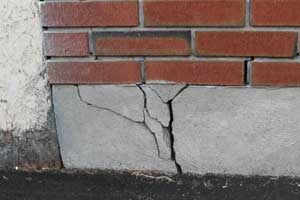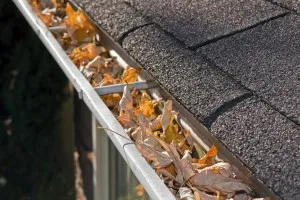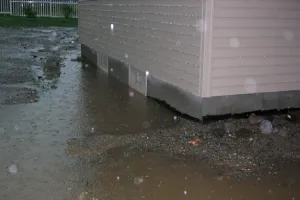The Fountain, a Fife With all the weight of your Seattle home, plus uneven and shifting soils, along with temperature and moisture fluctuations, your home’s foundation support takes it from all sides. The trick is to know for certain if that crack is cosmetic or structural. A cosmetic problem can be simply filled and painted. Foundation problems need to be addressed professionally to prevent major damage to your home’s walls and floors. At Robbins and Co., we can provide you with professional consultations and foundation repair services to get the issue taken care of.
Just because your home is new, this doesn’t mean your foundation is strong. There are constant pressures on your home foundation from the soil around it, as well as the sheer weight of that building. Builders do their very best to give you the best product they can, one which they expect to last for 50 years or more. However, they cannot see the pressures within the soil. And soil studies and testing aren’t included in most home construction budgets.
Once you know about a visible crack in that new or old foundation, you need to get some data on why it showed up and what caused it. The pressure from your house weight isn’t going to lighten up, neither will the earth quit shifting through the year.
Weak Bearing Soils
Some soils are simply not able to supporting the weight or bearing pressure exerted by a house on it’s foundation. Footings can press or sink into the softer soils, just like how you can leave a footprint in your yard after a heavy rain (while you leave no trace when it is dry). For those types of soils, footings should be designed to spread the load more widely, so more soil can take the pressure. Unfortunately, most footings are designed from general guidelines for average soils, not based on site-specific soil samples and testing.
Poor Compaction
If your home is on any slope at all, there’s a sizable chance that fill was added to bring up the building site to a flat and level condition. In general, hilltops are cut off and valleys filled in order to lay out building lots. Where fill soils are not adequately compacted and settled in advance, they will settle after the house is built. This may be one cause of your settling, cracking foundation.
Changes in Moisture Content
Moisture is a powerful element. Weather brings rainy days and dry seasons, which reflects in the soil. Wet winters with excessive freezing cold can cause shifts in the strongest concrete. Saturated (overly wet) soils can actually allow foundations to sink, partially or as a whole. Where there is insufficient drainage away from the building, water can pool right at the base, next to the foundation or basement walls. Leaks in water lines or plumbing, or a high groundwater table – all of these can similarly affect a foundation. Where you have a soil that has a high clay content, you can see the ground crack in dry weather. The soil is actually shrinking as it contracts. Not only dry weather, but also water-hungry vegetation and trees can also dry out your soil. As the soil shrinks away from the foundation, this can cause shifting.
Trees and Other Vegetation
Nearby trees can also create effects on your foundation. As trees grow, they expand their roots in search of water. Many home and building owners find that they have foundation settlement problems only years later. Looking closely, you’ll see they have trees which have matured and are within root-distance of that building. Trees will push roots right up against and through any foundation within their drip line (the edge of the leaves, where rain drips off). As well, these same roots will suck moisture away from the foundation, leaving it sitting in an over-dry zone. With a clay zone, this will create an unstable surrounding for that foundation. Shallower foundations are more often affected by dehydration problems than basements. As a general rule, if there are branches of a tree or bush which are right up against or over the top of a house, it’s roots are affecting that foundation to the same degree.
Soil Consolidation and Compaction
Consolidation or Compaction may take years to complete in any new construction. This is as the soil is most compacted right under the home. But continuing pressure will spread this compaction downward, making soils get denser over time. So the foundation will tend so sink lower over time. Eventually, this process slows down. And it depends on the nature of the underlying soil to determine how long and how much settling will actually occur. Of course, if your home was built on several types of soil, these will compact unevenly, and this causes other pressures on your home’s foundation.
Roadways and Street Creep
Interestingly, even the nearby roadways can cause significant damage to foundations. Concrete roads expand when heated and shrink as they cool. Expanding streets push against driveways. Driveways in turn, push against the foundation walls. This process will cause deflection and buckling. Something has to give. While it is common to put expansion joints in concrete slabs, these can often compress over time. Gaps are often left, but time has a way of filling these in with gravel and debris, so rendering them ineffective in dealing with street creep. Even if they look clear from the top, gravel might be lodged at the bottom, making such gaps useless. Street traffic can also affect your foundation from its vibrations. If your home is nearby to major roadways, particularly if these have large trucks at high speeds, these vibrations will be passed to your foundation. Since most foundations are not built to withstand such continuing vibrations, they can be weakened and damaged over the years.
Foundation Wall Cracks
Foundation wall cracks can get worse if they’re left untreated. Cinder Block walls are especially prone to cracking. Any crack or opening can become an opening for water to enter into or below the home. Water and moisture pressure will widen those cracks. All cracks should be repaired if they’re allowing water through. Even a hairline crack should be inspected by a professional immediately, as it can be a symptom of more major problems.
Horizontal Foundation Wall Cracks
If you have horizontal wall cracks, these are potentially very serious problems. Sometimes this may lead to the complete failure of the foundation walls. Such cracks occur when pressure builds against the side walls and forces them inwards. Unless relieved, this pressure can “snap” the walls, which would be a devastating result.
Cracks in the foundation walls will most often appear at the weakest points, including corners, edges of basement window frames, holes for service, concrete cold joints, long spans of wall, and pipe penetrations.
Robbins and Co. are Foundation Repair and Drainage Solution professionals in business since 1952. CONTACT US today at +1-888-344-1023 for a no-cost consultation or just to ask us a question. We look forward to talking with you.







